Control post-proceso
Las tecnologías de inspección modernas permiten una inspección totalmente automática.
La capa de supervisión de post-procesos de la Productive Process Pyramid™ incluye actividades de supervisión y creación de informes para proporcionar información sobre el resultado de los procesos completados. Estos procesos pueden utilizarse posteriormente para influir en las actividades posteriores.
Verificación trazable de conformidad

El nivel de supervisión de post-procesos incluye la verificación de los procesos y la pieza acabada según las especificaciones, además de registrar las rutas de los procesos y los resultados.
Estos controles son informativos y se aplican después de completar el mecanizado.
Registro de los datos del proceso …
 Situaciones producidas durante el proceso de mecanizado, como los cambios manuales o automáticos para procesar parámetros, compensaciones o sistemas de coordenadas
Situaciones producidas durante el proceso de mecanizado, como los cambios manuales o automáticos para procesar parámetros, compensaciones o sistemas de coordenadas- intervenciones en el proceso que pueden haber influido en el resultado
El software de verificación en máquina permite …
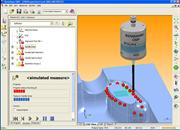 inspeccionar elementos fundamentales en las mismas condiciones ambientales que el proceso de mecanizado
inspeccionar elementos fundamentales en las mismas condiciones ambientales que el proceso de mecanizado- confiar en la estabilidad del proceso de mecanizado
La generación de informes post-proceso proporciona ...
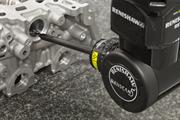 registros documentados de la conformidad del componente
registros documentados de la conformidad del componente- seguimiento histórico de las dimensiones de los elementos fundamentales para la supervisión de la condición de la máquina y mantenimiento programado
Controles informativos
Las tecnologías de inspección modernas permiten una inspección totalmente automática de las piezas más complejas, a menudo con una sencilla tarea de preparación. De este modo, se necesitan menos inspectores profesionales para supervisar los controles de calidad.
Con las últimas tecnologías de 5 ejes, puede inspeccionar las piezas 3 veces más rápido en las MMC. Los sistemas de calibre flexibles permiten una rápida verificación del material y piezas de medio y gran volumen.
La verificación en la máquina puede detectar componentes que no cumplen la conformidad antes de deteriorar el reglaje, por tanto, es posible tomar medidas correctivas en el momento.
REVO®, PH20 y Equator™ de Renishaw son unas herramientas imprescindibles para la generación rápida y trazable de informes de conformidad de la pieza con la especificación, con registro de trayectoria y resultado de las operaciones de mecanizado.
Patrones del proceso productivo
-
 Educational article: (AP400) Productive Process Pattern: Process reporting [en]
Educational article: (AP400) Productive Process Pattern: Process reporting [en]
Productive Process Pattern™ from the post-process monitoring layer of the Productive Process Pyramid™. Most CNC control systems have the capability to send customised information through RS232 serial ports, an Ethernet connection, or to the hard disc of the CNC control. The reporting capability allows a traceable record of the ‘route’ used to manufacture a component to be stored along with the component inspection data. For example, it is possible to log any detail of machine updates, required re-machining, or tools that were broken.
-
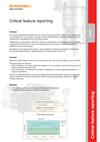 Educational article: (AP403) Productive Process Pattern: Critical feature reporting [en]
Educational article: (AP403) Productive Process Pattern: Critical feature reporting [en]
Productive Process Pattern™ from the post-process monitoring layer of the Productive Process Pyramid™. Select the critical features which are to be measured and reported, according to a set of criteria. Features should be reported where the failure of a feature would be indicative of a more serious process fault (e.g. the final feature machined with each tool); or when the position or dimension of a feature is dependent on other measured features or ‘in process’ calculations.
Documentos
-
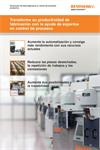 Folleto: Soluciones de metrología para un control de procesos productivo
Folleto: Soluciones de metrología para un control de procesos productivo
Transforme su productividad de fabricación con la ayuda de expertos en control de procesos
-
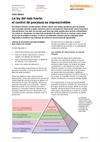 Libro blanco: La ley del más fuerte - el control de procesos es imprescindible
Libro blanco: La ley del más fuerte - el control de procesos es imprescindible
En tiempos difíciles, los fabricantes intentan reducir sus costes operativos, pero es posible que no puedan afrontar el gasto necesario para su recuperación adquiriendo nueva maquinaria más productiva. Con esta vía cerrada ¿qué otras opciones quedan para recortar radicalmente los costes sin reemplazar las máquinas existentes? En este artículo se analizan cuatro áreas en las que es posible conseguir un ahorro considerable, siempre que las empresas estén dispuestas a modificar sus sistemas de control en los procesos de mecanizado.
-
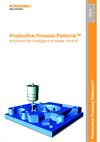 Educational article: (AP010) Productive Process Pattern: Productive Process Patterns™ [en]
Educational article: (AP010) Productive Process Pattern: Productive Process Patterns™ [en]
Introduction to the Productive Process Patterns™ - solutions for intelligent process control within manufacturing




